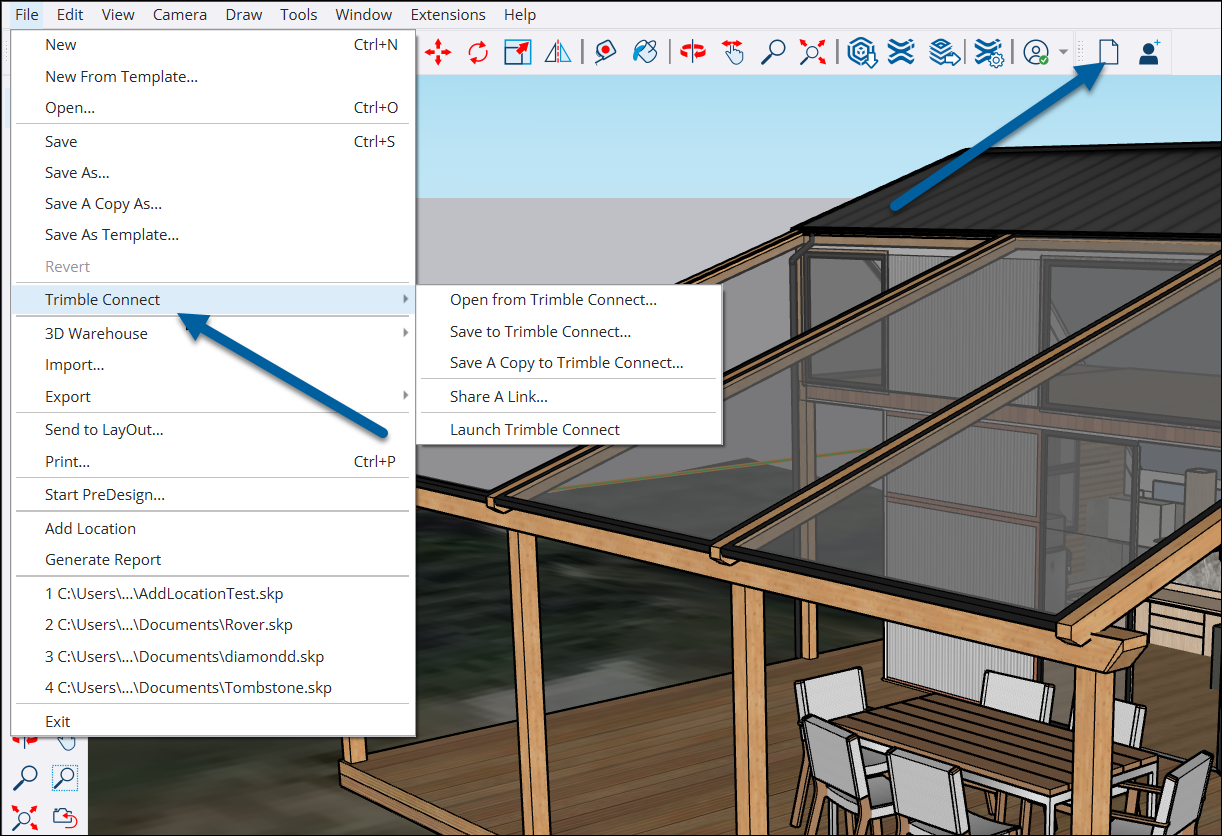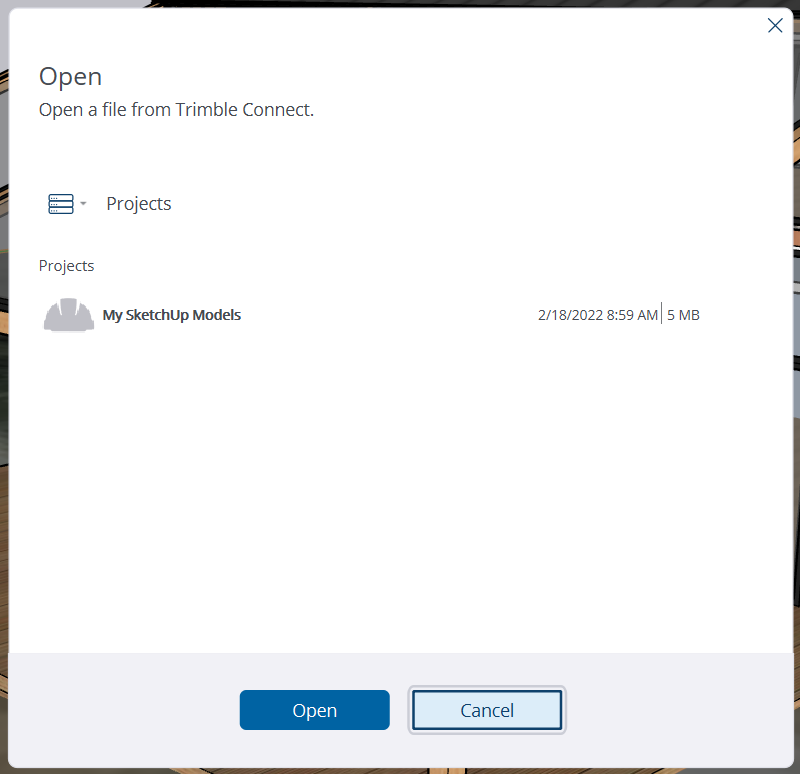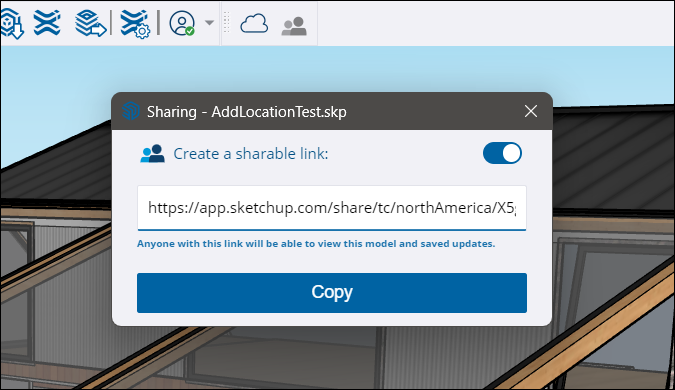Trimble Connect is a cloud-based common data environment (CDE) and collaboration platform designed with the construction industry in mind. When you use Trimble Connect with SketchUp, you can organize project data, preserve version history, and share models with stakeholders. SketchUp subscription plans include access to Trimble Connect with unlimited cloud storage.
For more information, see Getting Started with Trimble Connect . If you want a more comprehensive guide to all things Trimble Connect, visit the Trimble Connect Knowledge Center .
Trimble Connect and SketchUp for Desktop
Trimble Connect and SketchUp work together to help you access and modify cloud-based models. When you save a model to Trimble Connect from SketchUp for Desktop, changes are saved and available to teammates or other stakeholders who access that file through Trimble Connect. This means your teammates and stakeholders can view or modify your models across all flavors of SketchUp!
Trimble Connect uses Projects to help organize files. A Project is best described as a collection of files with a common initiative in mind. Each Project can contain any number of files related to an initiative, and not just SketchUp models.
In SketchUp for Desktop, you can find the key actions for working with cloud-based files in the File menu, under Trimble Connect.

File > Trimble Connect
From File > Trimble Connect you can:
- Open from Trimble Connect – Browse your Trimble Connect Projects for the model you want to open in SketchUp.
- Save to Trimble Connect – Allows you to save the current SketchUp model to Trimble Connect. If you have already saved this file to Trimble Connect, saving the file in this way will create a new revision.

- Save a Copy to Trimble Connect – Instead of saving your model directly, you will save out a copy of your model to Trimble Connect. This can be useful for when you want to work on a locally saved copy of a model, but would like to publish it up to a collaborative data environment in Trimble Connect.
- Share a Link – Generate a view-only link you can share with anyone. Whoever you share the link with can open and view your model in their preferred web browser.
- Open Trimble Connect – Opens Trimble Connect for Web in your preferred web browser. Here you can inspect version history, manage access to projects, and go even deeper to extend SketchUp in Trimble Connect workflows. You may need to login using your Trimble ID to access your Trimble Connect account.
The Trimble Connect Toolbar
The Trimble Connect toolbar can be toggled in View > Toolbars and contains the following:
- File Status – Hover over the File Status icon with your mouse to see when your model was last saved to Trimble Connect. If it has not yet been saved to Trimble Connect, the icon appears as a document to signify a local file (file image). If it has been saved to Trimble Connect, the icon appears as a cloud to signify a cloud-based file (cloud image). If a save is in progress, you can see that status by hovering over the icon.
- Share a Link to this model () – Generate a view-only link you can share with anyone. Whoever you share the link with can open and view your model in their preferred web browser.
Link Sharing with Trimble Connect
Share a Link generates a view-only link you can share with anyone. With this link, stakeholders and other collaborators can open and view your model in SketchUp for Web without logging in or installing any apps. Don’t want folks viewing that version of your model? Toggle off sharing, invalidating the link you created and restricting access immediately. If you decide to share your file again, turn the toggle back on and generate a new link you can use to share your model.
To share a link, click the Sharing icon from the Trimble Connect toolbar. If a shareable link has not yet been created, you’ll see this icon (![]() ). If a link has already been created, you’ll see this icon (
). If a link has already been created, you’ll see this icon (![]() ). You can also open the Link Sharing dialog through File > Trimble Connect > Share a Link.
). You can also open the Link Sharing dialog through File > Trimble Connect > Share a Link.
